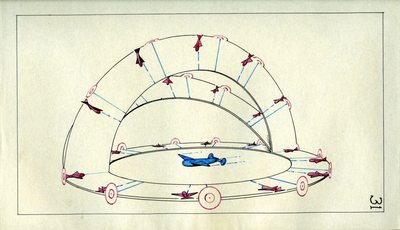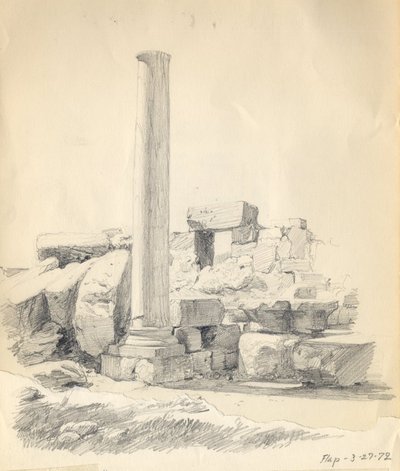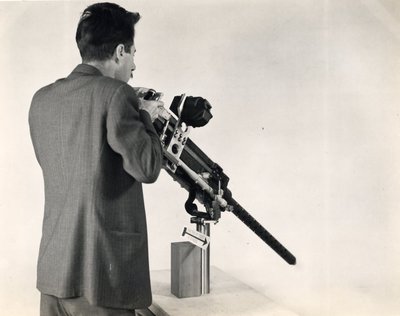In November of 1943, Roger had his appointment at Mt. Wilson Observatory voluntarily terminated. In its stead he accepted temporary placement as part of the 9th Bomber Command in the U.S. Army Air Force, where he spent about six months in Africa as an Operational Analyst. He was stationed in Libya and Egypt, where he analyzed defensive gunnery for formations of B-24 bombers. He also illustrated and co-authored “A Manual of Flexible Gunnery for Aircraft” with Hugh Dowker in Cairo, an extension of some of the work on position firing that he had conducted while at Mt. Wilson. The manual, aside from a few discrepancies, was very successful and highly sought after by U.S. gunnery schools, where it had a marked influence on lecture outlines.
Roger also took up sketching again, an activity that had fallen by the wayside as he became increasingly absorbed in his professional pursuits. His 1943 sketchbook contains several drawings of various pillars and statues in the ruins of Apollonia in Greece and of Cyrene in northern Libya, two places where he had several days to poke around and act like an amateur archaeologist. He spent October in Cairo, “billeted in an officer’s billet,” and explored the surrounding country. Roger enjoyed a trip to Saqqara where he saw the tomb of the sacred bulls and the tomb of Ptah Hotep, but failed to acquire a very high opinion for life in the area.
Upon his return from Africa, Roger was offered a position at the Buckingham Army Air Field at Fort Myers, Florida to aid an Army Air Force instructor’s school with flexible gunnery. Instead he chose to return to Mt. Wilson, where he conducted research in air-to-air gunnery for Section T of the NDRC. He started working on a project to solve various aerial photography problems and also developed a research project on defensive gunnery for formations of B-29 bombers. Roger also contributed to “Get that Fighter,” a manual released by the War Department in 1944 that he had begun near the end of his time in Africa. “Get that Fighter” was so popular within the Armed Forces that the Navy Command eventually acquired it and issued a nearly identical version of the text for their own distribution.
Throughout the rest of Roger’s service at Mt. Wilson, his opinions and expertise concerning various sighting devices and practices were actively solicited by members of the Armed Forces. He was requested for meetings around the country, and a number of officers and military researchers sought an audience with him to discuss his work. In April 1944 Roger’s immediate presence was requested in Florida for a series of consultations, with an ending note that his transfer to Fort Myers was again strongly recommended.

Pen and ink drawing by Roger Hayward for a comic book style manual for U.S. Air Force gunners, ca. 1940s. More images here

Pencil drawing by Roger Hayward titled "Flap," 1942. More images here

Roger Hayward demonstrating the use of a military machine gun, ca. 1947. More images here
